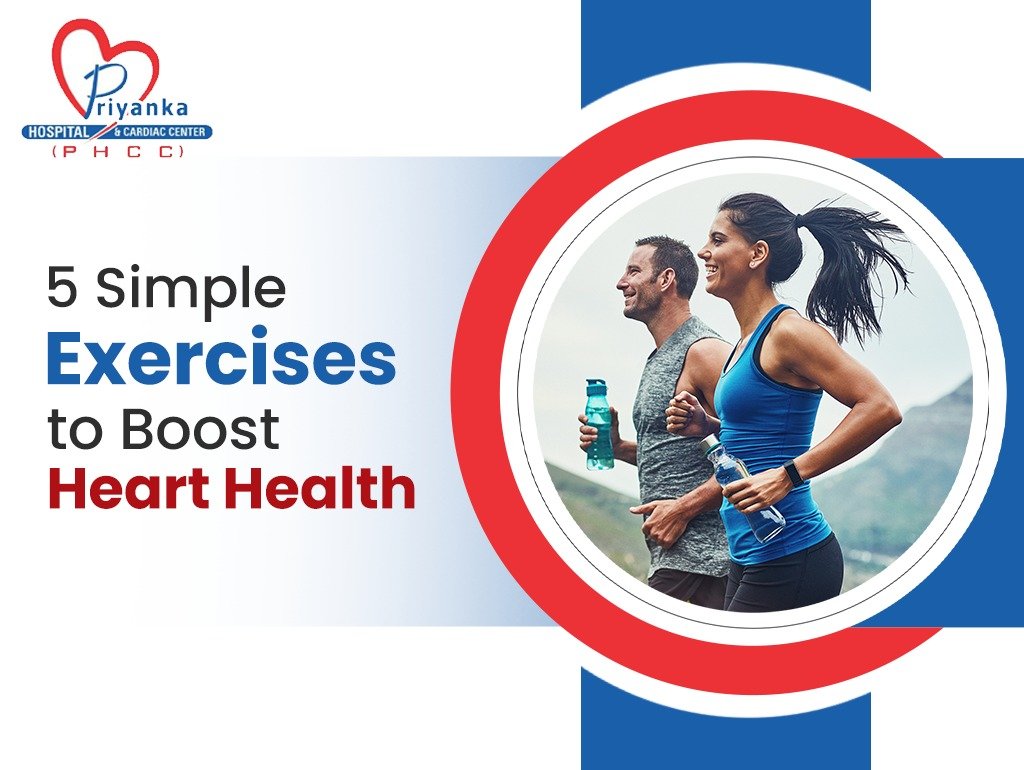Introduction
The secret to eighty-plus years is not falling apart at sixty. A fit and healthy heart is the way to exercise it. One of the finest ways to do this is by doing some exercises for the heart. They temper blood pressure, improve circulation, and diminish the danger of heart diseases. Below are five simple exercises suitable for your heart and how to incorporate them into your daily routine.
1. Walking
How Walking Works Your Heart
Positively pedestrian, nothing is closer to the heart than a good stroll. It is arguably one of the best and most accessible forms of cardio you can get. It increases the heart rate enough for the old blood pressure to rise, theoretically firing up your bean-tickler. And just in case that wasn’t sufficient impetus—it’s low-impact and easy on the joints.
How to Fit Walking into Your Day
You need a little bit of time to walk. Hints on fitting it into daily life include:
- Climber of stairs when possible.
- Bypass the elevators.
- Use your lunch break and fit in a brisk walk.
- If you can, park in a space further than the parking lot to get in a few more steps.
Tips for Getting the Most Benefit of Your Walking Workout
For guiding to get more out of waking workout, some suggestions are as:
Brisk walking: The steps are quick but steady enough that you can still carry on a conversation.
Shoes: Good walking shoes provide support and potentially help prevent injury.
Mix it up: Change the walk location to ensure variety and challenge.
2. Swimming
How Swimming Can Benefit Your Heart
It is holistic in exercise and good for the heart. Swimming is the way to build your stamina without being harsh on your joints because of the support the body gets from the water itself.
How to Swim Effectively
- Swim using different strokes, such as freestyle. The backstroke and breaststroke vary in the way the exercise goes around in muscle resistance.
- Swim using interval training. There needs to be a few swimming laps, but a few easy laps later to cool down the body, and then recovery laps will build fitness quickly.
- Swim regularly. Aim to get 30 minutes of swimming a few times per week, whether in the pool or open water.
Swimming Safety Tips
- Always warm up and cool down: ease in with stretching at the front, and finish with light swimming.
- Don’t dive directly into a pool to prevent injury.
- Keep yourself hydrated: take some water before and after you swim to keep you humid.
- Swim in safe locations: Swim in supervised, secure locations.
3. Cycling
How Biking Benefits Your Heart
Cycling is an excellent exercise for a healthier heart. For one thing, it gets your heartbeat up, and this exercise helps one to keep weight under control since settling would be much easier on one’s joints than if they were running or doing most of the other high-impact exercises. Besides these, you can do it in the open air or with a stationary bike.
Tips for Choosing the Right Bike
- Get the right size: The size of your bike should be appropriate for your height. You should feel very comfortable and not feel strained and wind up about easily.
- Know the type of bike: Do you want to ride on a smooth, invitingly looked-after road or craggy, rough trails? Then, you’ll need to fork out your bucks for mountain bikes.
- Consider professional fitting: Bike fitting is the art of ensuring that your bike is integrated into your body dimensions, according to Cycling Tips.
- Seat adjustment: The seat should be adjusted such that, while pedalling, your leg stretches completely with your heel on the pedal.
Proper Form and Technique for Cycling
Remember to keep your back straight, and your hands relaxed over your handle.
It is leading well using proper gears for ascent, flat land, or any other terrain that may pose a challenge.
4. Strength Training
Why Strength Training is Good for Your Heart
It’s great for bulking up those guns but also exemplary for the heart. It boosts metabolism, maintains weight, takes care of the heart, and minimizes the risk of heart disease.
Beginner-Friendly Strength Training Exercises for heart health
- Bodyweight squats
- Pushups: Great upper body strength that gets your heart up
- Lunges: Great exercise for working on lower body and balance work. How to Progress Safely.
Progressing in Strength Training Safely
- Begin with light weights so you will have good form with your exercise and can gradually get progressively heavier with time.
- Good form: This would help so you don’t hurt yourself with weightlifting.
- Rest and recover: You should give the muscles some time off after exercising.
5. Yoga
How Yoga Can Help Your Heart
Yoga ensures heart health as much as flexibility. The stress-busting practice helps to reduce stress, which is good for your heart and improves blood flow. It also can help bring down blood pressure.
Heart-Healthy Yoga Poses
- Downward Dog: Helps circulation, reduces stress
- Warrior II: Energizes body, balances
- Cat-Cow Stretch: Enhances flexibility in the spine and decreases tension in the body
Incorporating Yoga into Your Routine
- Do some yoga, about 15-30 min, on some days of the week.
- Combine some yoga with other exercises: It’s perfectly balanced if one does yoga to accompany walking, swimming, or cycling regularly.
- Try different styles: Since there are so many varieties of yoga, keep trying them, and finally, there must be one that works for you.
Conclusion
These five simple exercises can do much for your heart’s health if you can teach them daily. Daily activities are added to the exercise routine, each of which will bring additional gains to a healthy heart. If followed, the following exercises will keep one in good cardiovascular health and well-being. Get active now and feel your way toward a more robust and healthier heart!
FAQS
1. Can I work my heart in more than one type of exercise?
Yes—all these components include walking, swimming, cycling, strength training, and a little yoga. Having all of these different suitable components working toward better heart health with various workouts can help keep things exciting and on course.
2. How much exercise leads to better heart health?
One should perform physical exercises of moderate intensity for at least 150 minutes a week. It is possible to divide this time into small parts—for example, 30 minutes a day for five days out of a week. Of course, other exercises, such as strength-training days, need to be added, which generally amount to two or more per week.
3. Are there any exercises to avoid for individuals with heart conditions?
One should always see a doctor before engaging in new exercises, especially concerning heart disease and associated conditions. Low-impact activities such as gentle yoga, walking, and swimming are very safe and carry tremendous value to their advantage. Some other excellent examples of low-impact exercises considered very safe for the reparation of a person with a repaired heart defect include cycling and water aerobics.

